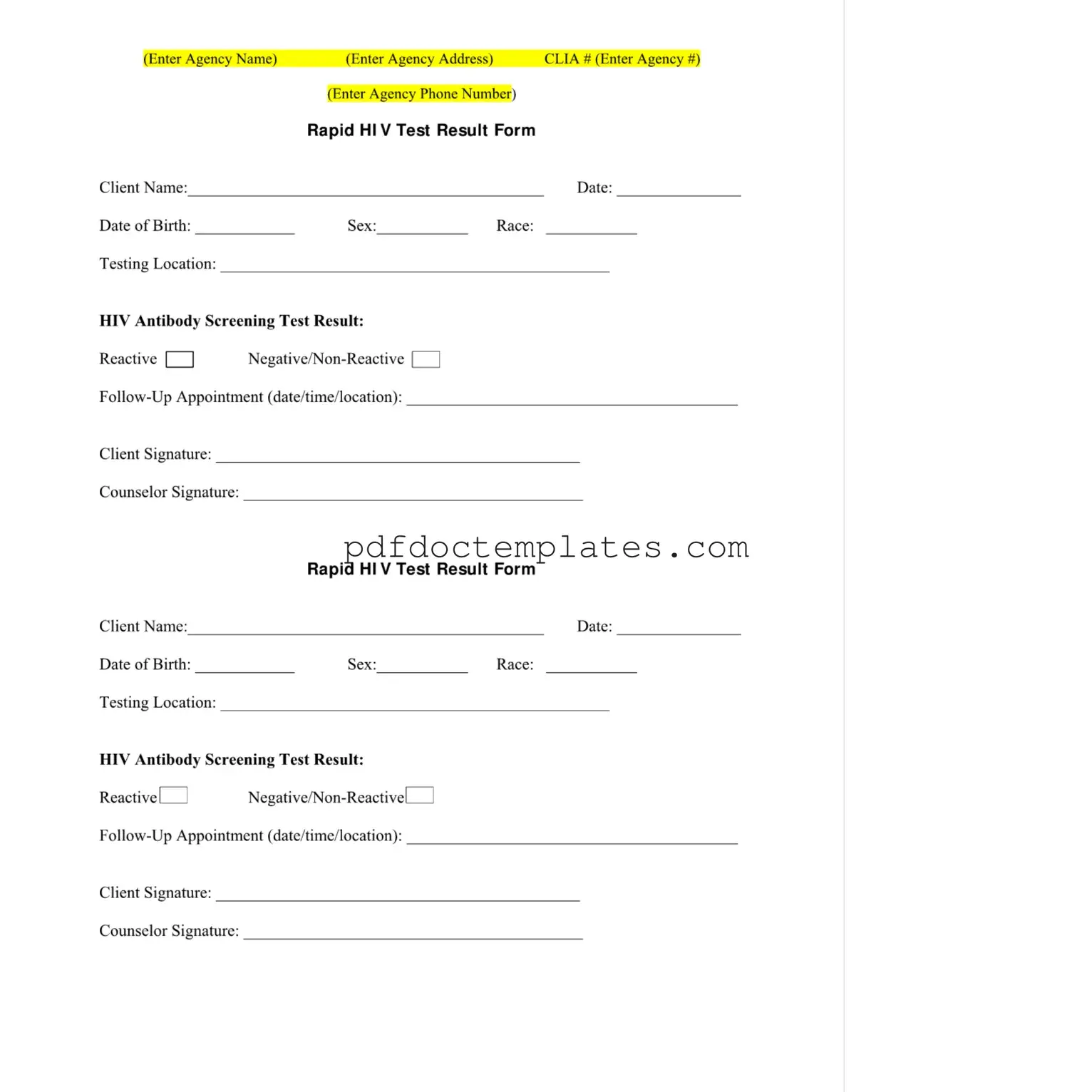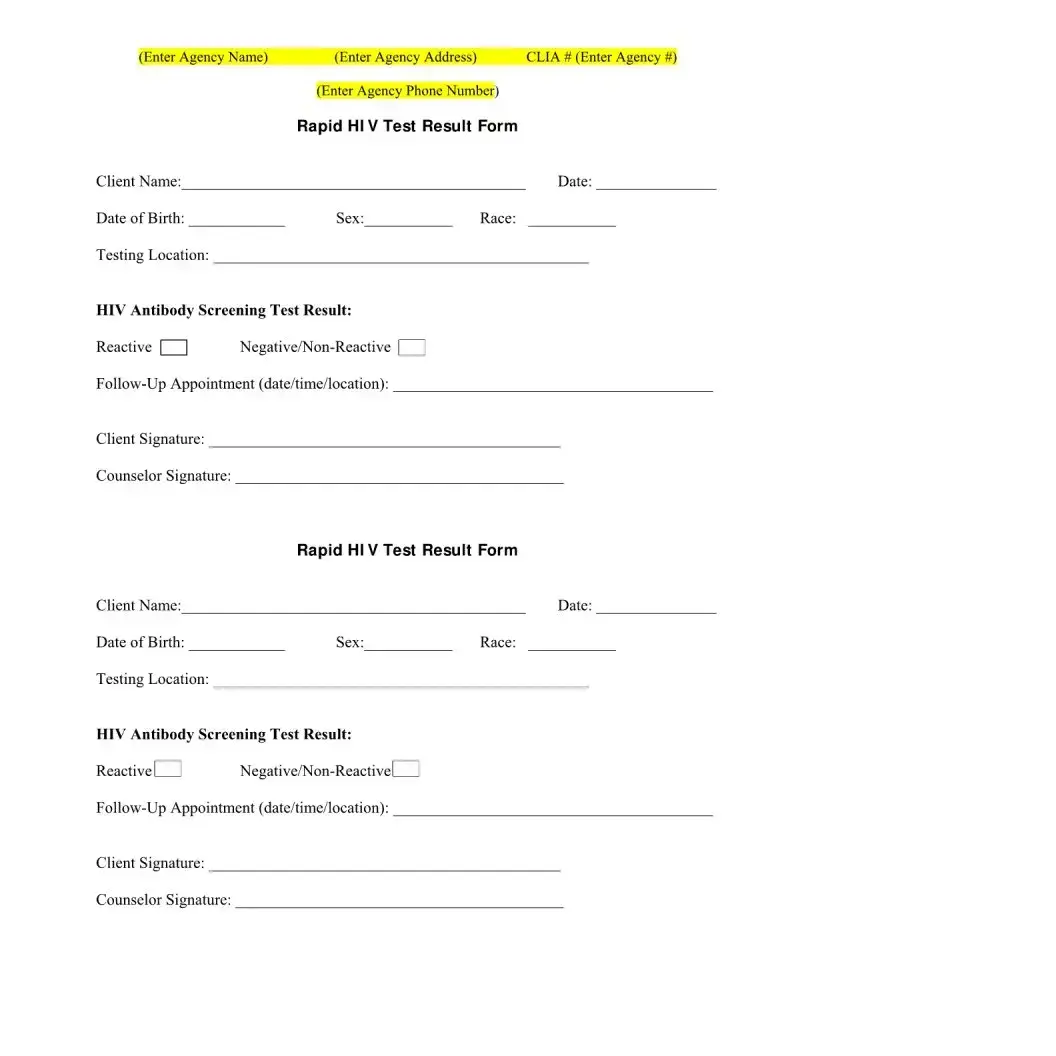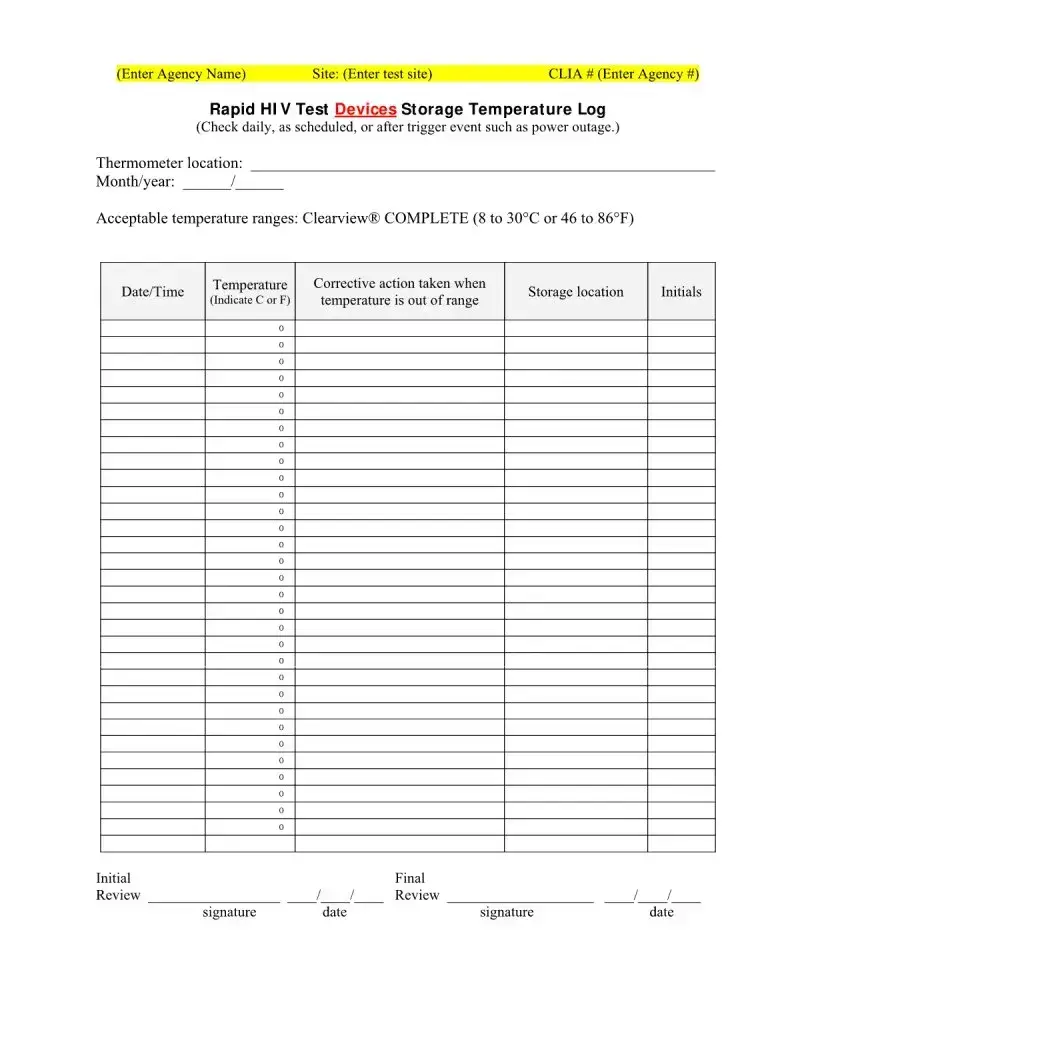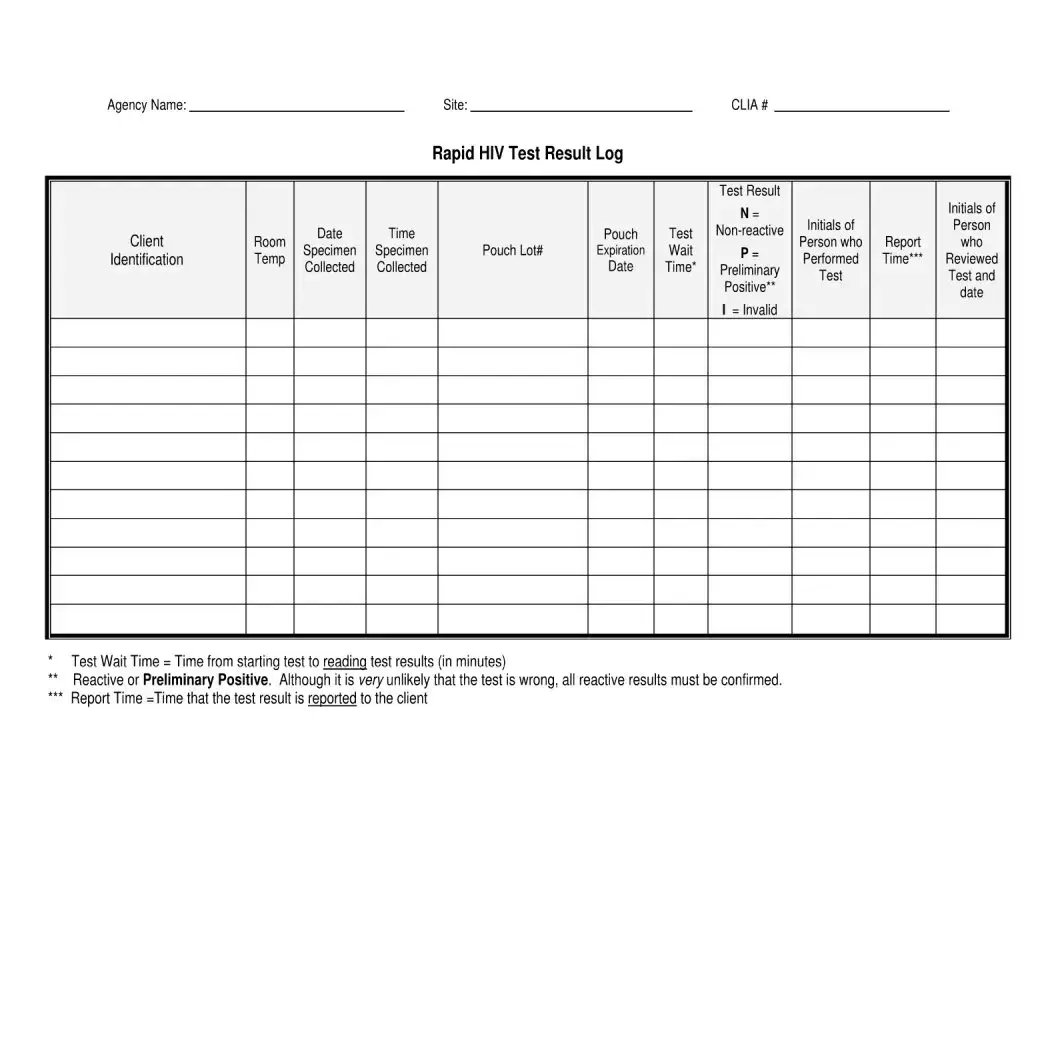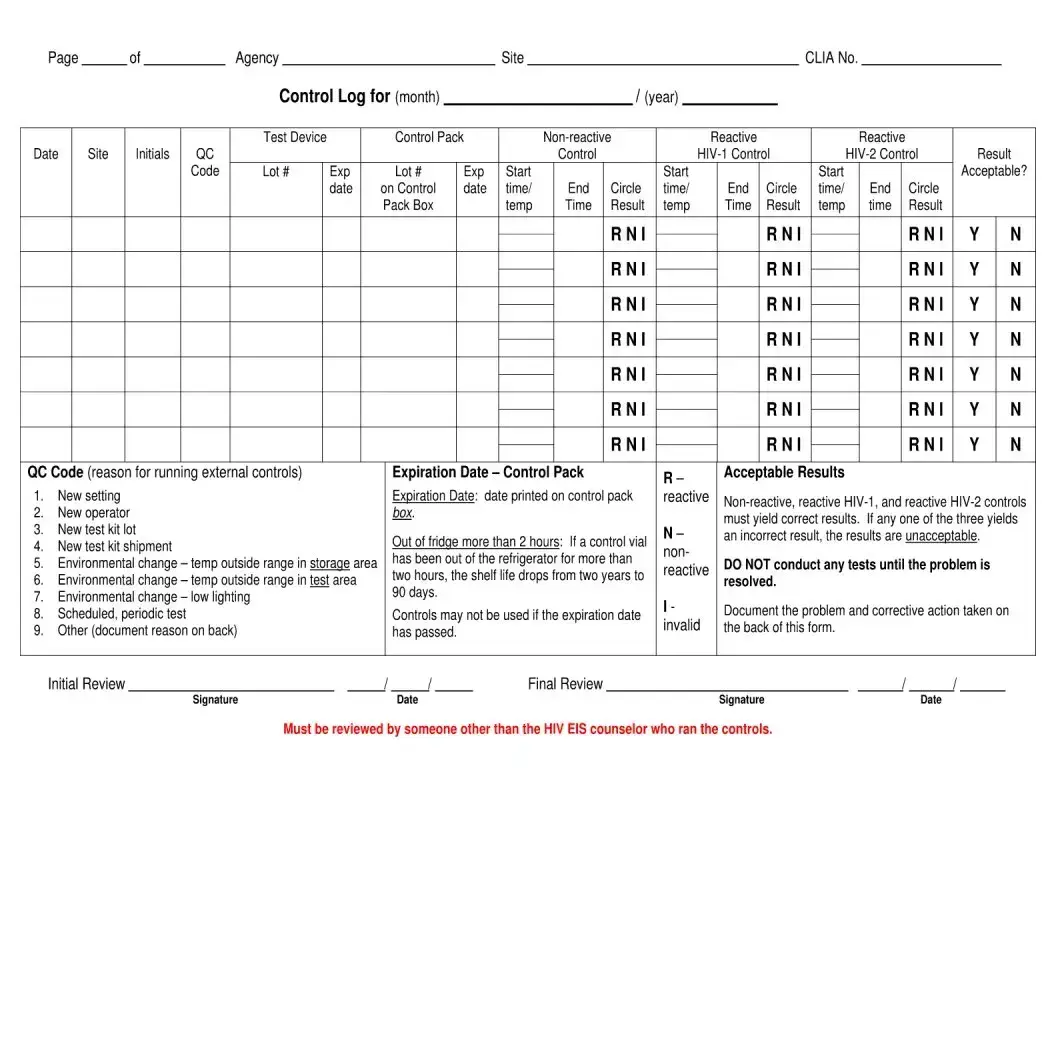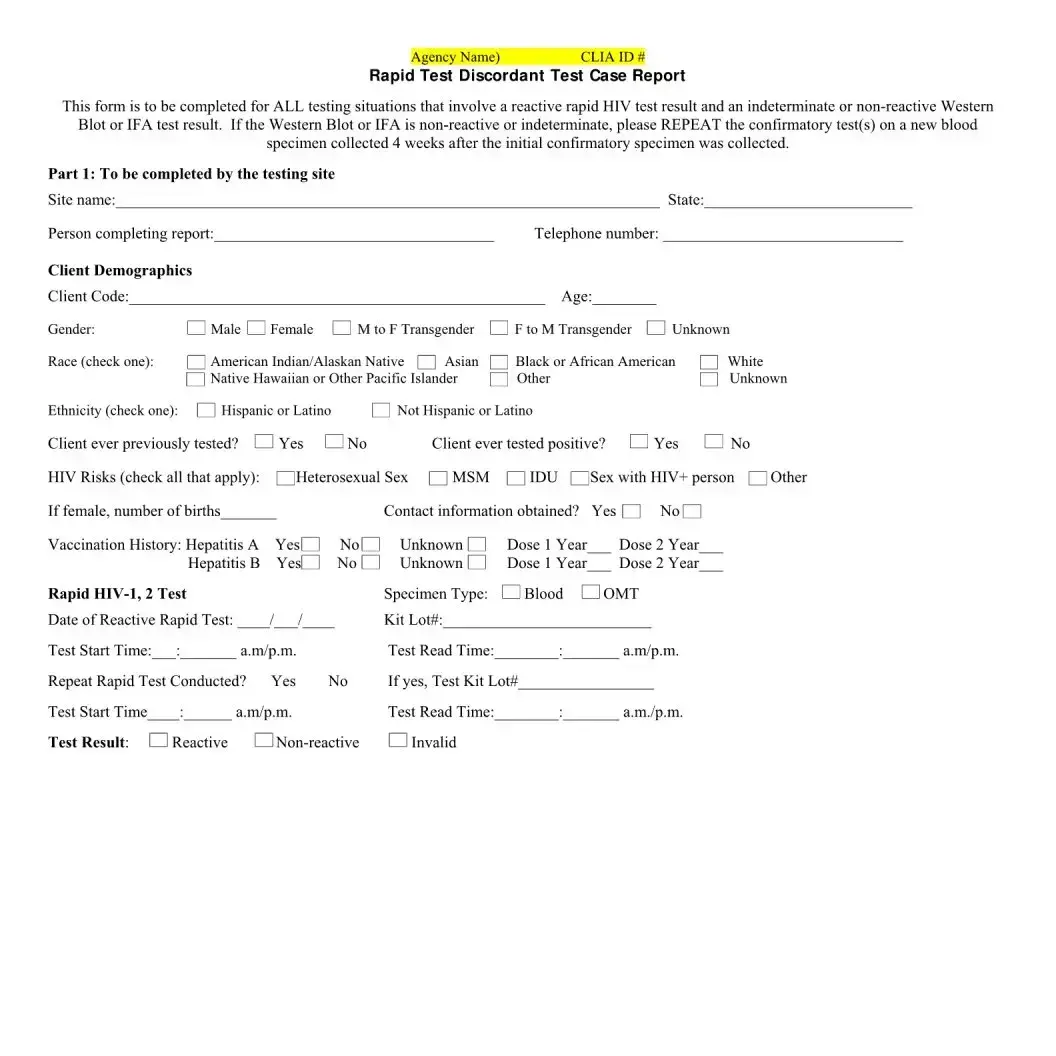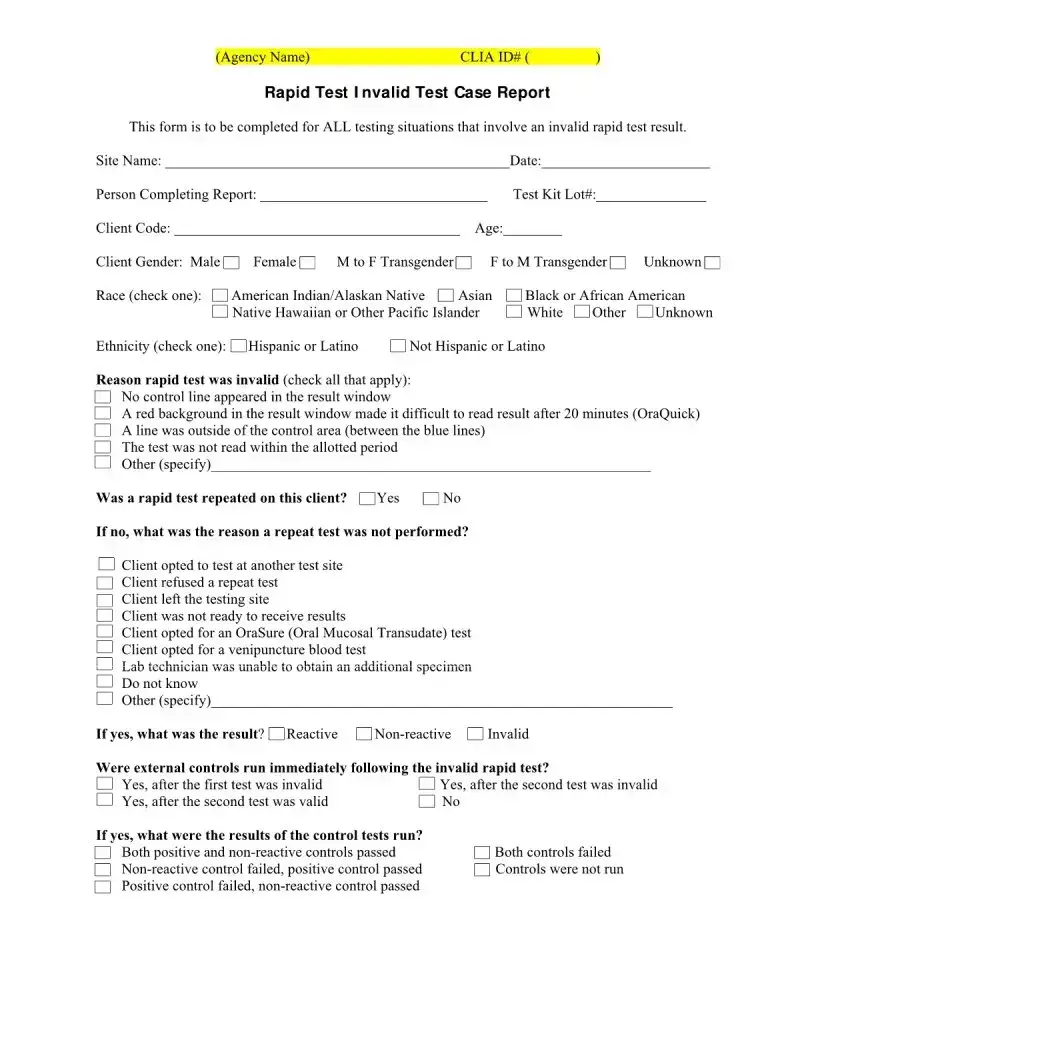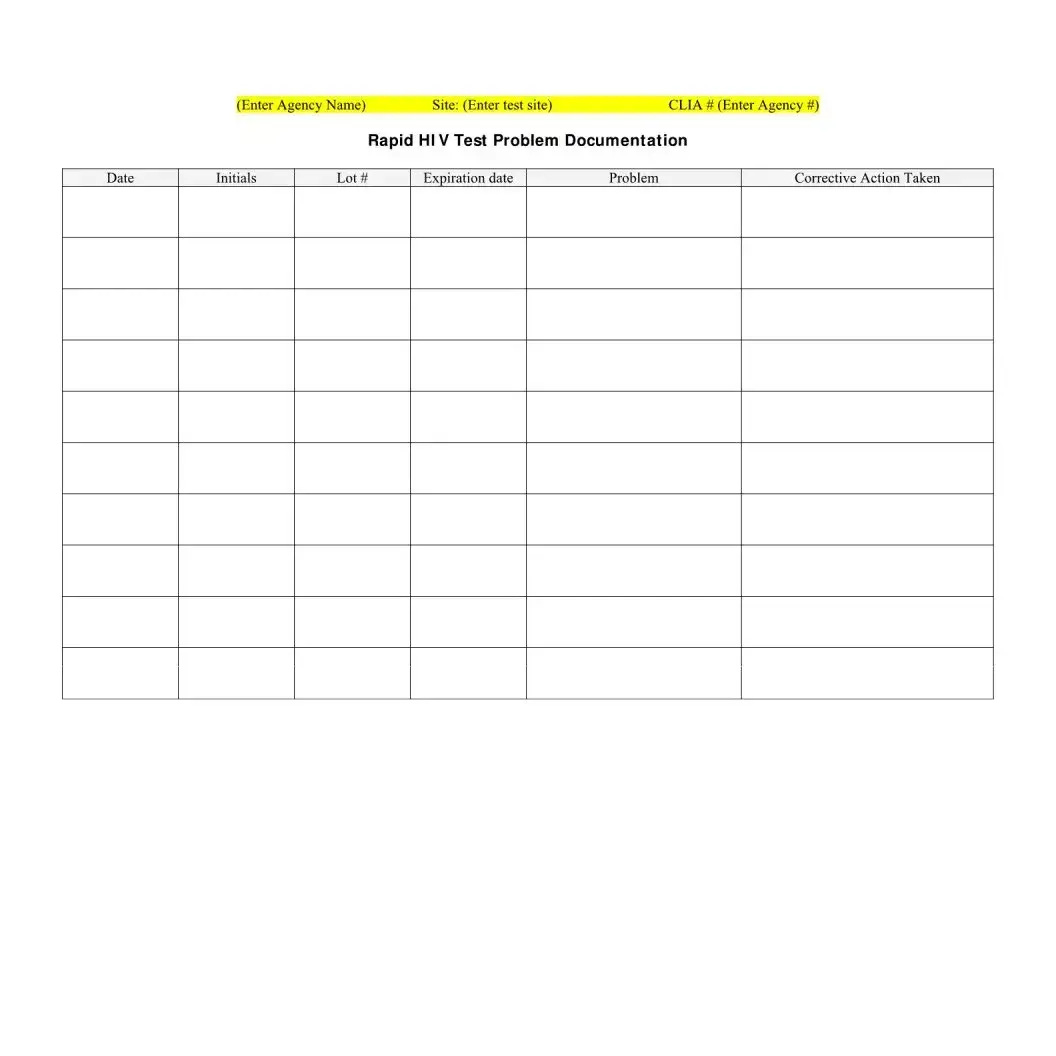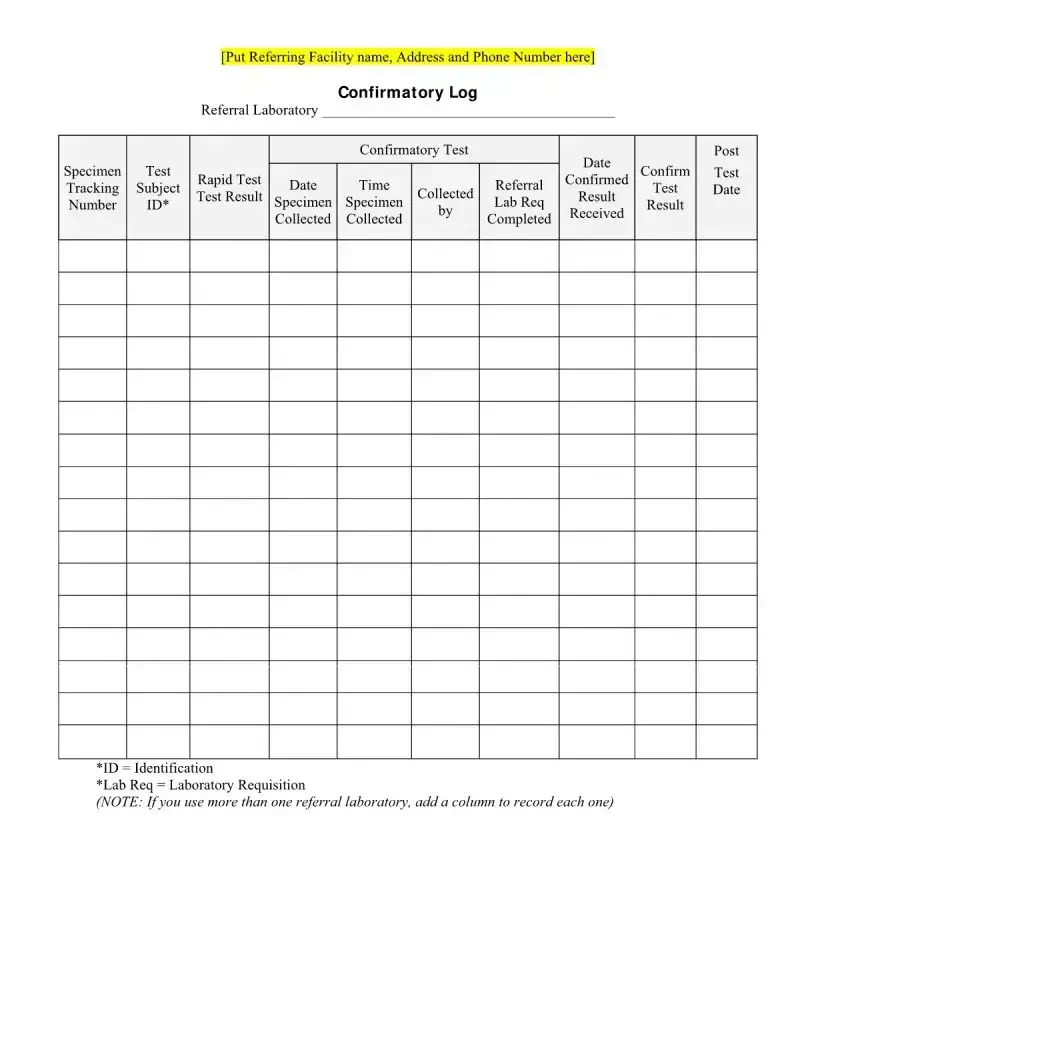Download Negative Hiv Test Template
The Negative HIV Test form is a crucial document used to record the results of an HIV antibody screening test. This form captures essential client information, including name, date of birth, and testing location, along with the test result and follow-up appointment details. To ensure accurate reporting and client care, it is important to fill out this form completely and correctly.
Please fill out the form by clicking the button below.
Access Your Document
